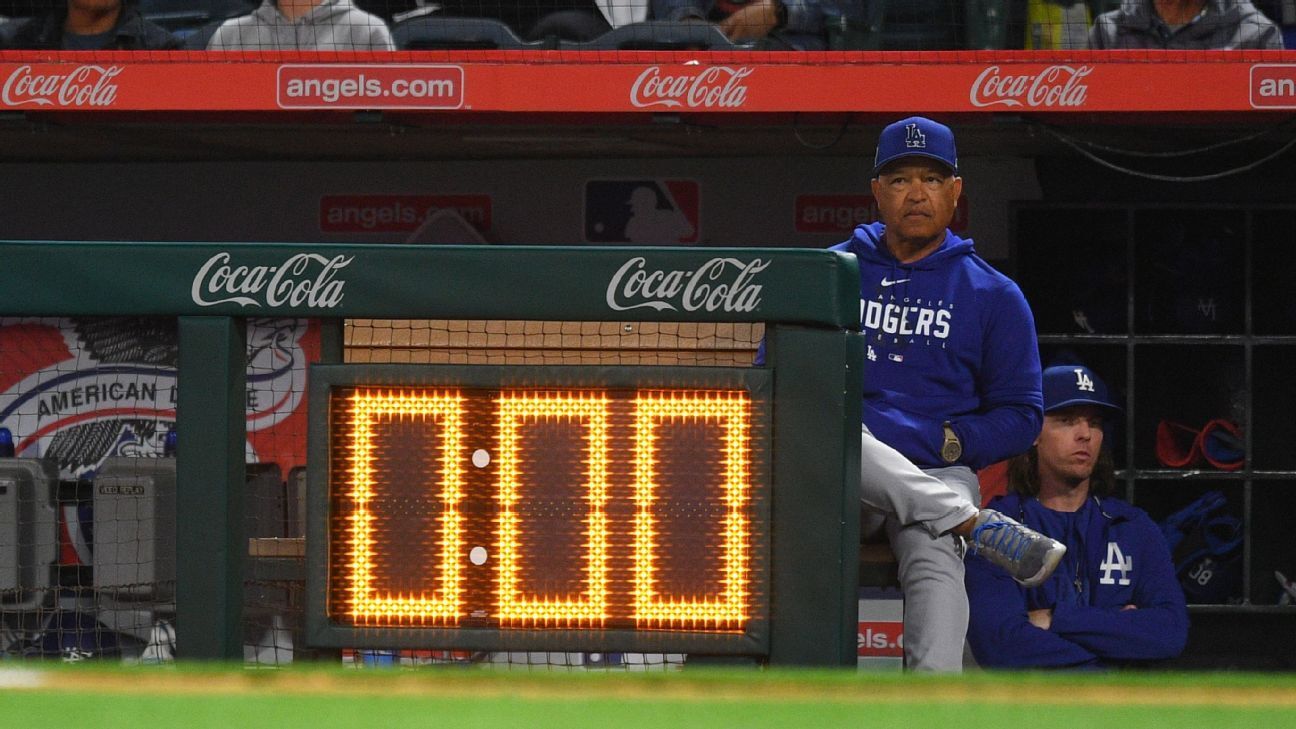Let’s talk baseball rule changes.
We had an exciting Opening Day. We saw four shutouts and two 10-9 games. Aaron Judge homered in his first at bat as Yankee captain, Shohei Ohtani was lights out on the mound for the Angels, George Springer had five hits for the Astros, Jacob deGrom was hit hard for the Rangers and Justin Verlander went on the IL for the Mets. We also saw pitch clock violations for pitchers, and Rafael Devers (Red Sox) struck out for “not being alert” without that third-strike pitch even being thrown.
So, the 2023 Major League Baseball season is underway and continues to evolve. There have been changes … rule changes. How do you feel about them?
Here’s what we have new for 2023:
- A pitch timer in which the pitchers start their deliveries within 15 seconds with the bases empty, and within 20 seconds with someone on base; and the batter has to “engage” the pitcher or “be alert” to the pitcher with eight seconds left on the timer.
- No severe shift: Defensive positioning restrictions require two infielders on each side of the second-base bag, with their feet placed within the infield border when the pitcher is on the rubber.
- Larger bases now measure 18 square inches instead of 15.
- Pickoff attempts limited: A pitcher can disengage from the rubber twice per plate appearance. If he does so a third time, the pickoff must be successful or it will be ruled a balk.
- And the “ghost runner” to start extra innings has been made permanent.
Why mess with what many of us played countless times and thought of as pure and perfect? Well, to put it into perspective, baseball has been changing rules since the organized game began. These new changes have already impacted the game.
Here are some Opening Day results and indicators:
Pace of play: The game now plays almost like a highlight reel. Of the 15 games played, 10 were completed in under three hours, with the Rays beating the Tigers and the Mariners beating the Guardians, both in a lightning-fast two hours and 14 minutes. The longest game was a 10-9 Blue Jays win over the Cardinals in 3:38.
Marcus Stroman of the Chicago Cubs was charged with the first pitch clock violation in Major League history. Unfazed, the veteran right-hander pitched six scoreless innings in a win over Milwaukee. There were 14 pitch timer violations: eight on pitchers, five on batters and one on a catcher. Jeff McNeil of the Mets was given a strike by the plate umpire after teammate Pete Alonso (a runner) took too long getting back to first base. In 2022, the average time of games was three hours and six minutes. Opening Day average length was 2:45.
The games moved quickly. They seemed to be more exciting with more action.
As for the larger bags and limited pickoff attempts, teams went 21 for 23 on stolen base attempts. That is an average of 1.53 attempts per game. Last season, teams attempted 0.67 stolen bases per game. If this holds or builds, teams and players are going to be far more aggressive on the base paths.
Exciting? Maybe. Different? Yes, but baseball has been changing the game since it began. Pitchers once threw underhand and the batter could request a pitch location. Home plate distance from the mound has changed from 50 feet to 60 feet-6 inches. Balls and strikes changed from seven balls, to six to five to the current four, and the strike zone has been changed from shoulders to knees to the current “stripe” from the numbers to mid-thigh.
Batted balls that bounced into the stands were once home runs, now they are ground-rule doubles. Fly balls could be caught on a bounce for an out. The spitball was legal and so was “sticky stuff.” The designated hitter began as an experimental rule. Runners can no longer “take out” a middle infielder on double plays, catchers can no longer block home plate and the runner can’t crash into the catcher. And umpires’ calls now often get overturned by camera angles.
Changes happen. For me, I can’t wait until next year when the robotic home plate umpire becomes a thing. Personally, I think pitch framing is legal deceit and that an umpire’s “interpretation” of the strike zone is outside the rules. Pitch framing is an art that should make no difference in the game, as it is not where the catcher receives the pitch that matters, it is where or if the pitch crosses the batter’s strike zone, well ahead of the catcher’s glove.
A batter should be rewarded for his ability to take a pitch outside the zone and not have it called a strike, and a pitcher who paints the upper, lower, right and left boundaries of the zone should also be rewarded, but should not get a call on one outside the zone. Ball-strike calls affect every at bat and all batter-pitcher chess games. Make the proper call, I say.
Too many changes or should the game continue to evolve? What do you think? The basic game or improved pace and correct-call games? Let me know at mike.blake@mountvernonnews.com.







